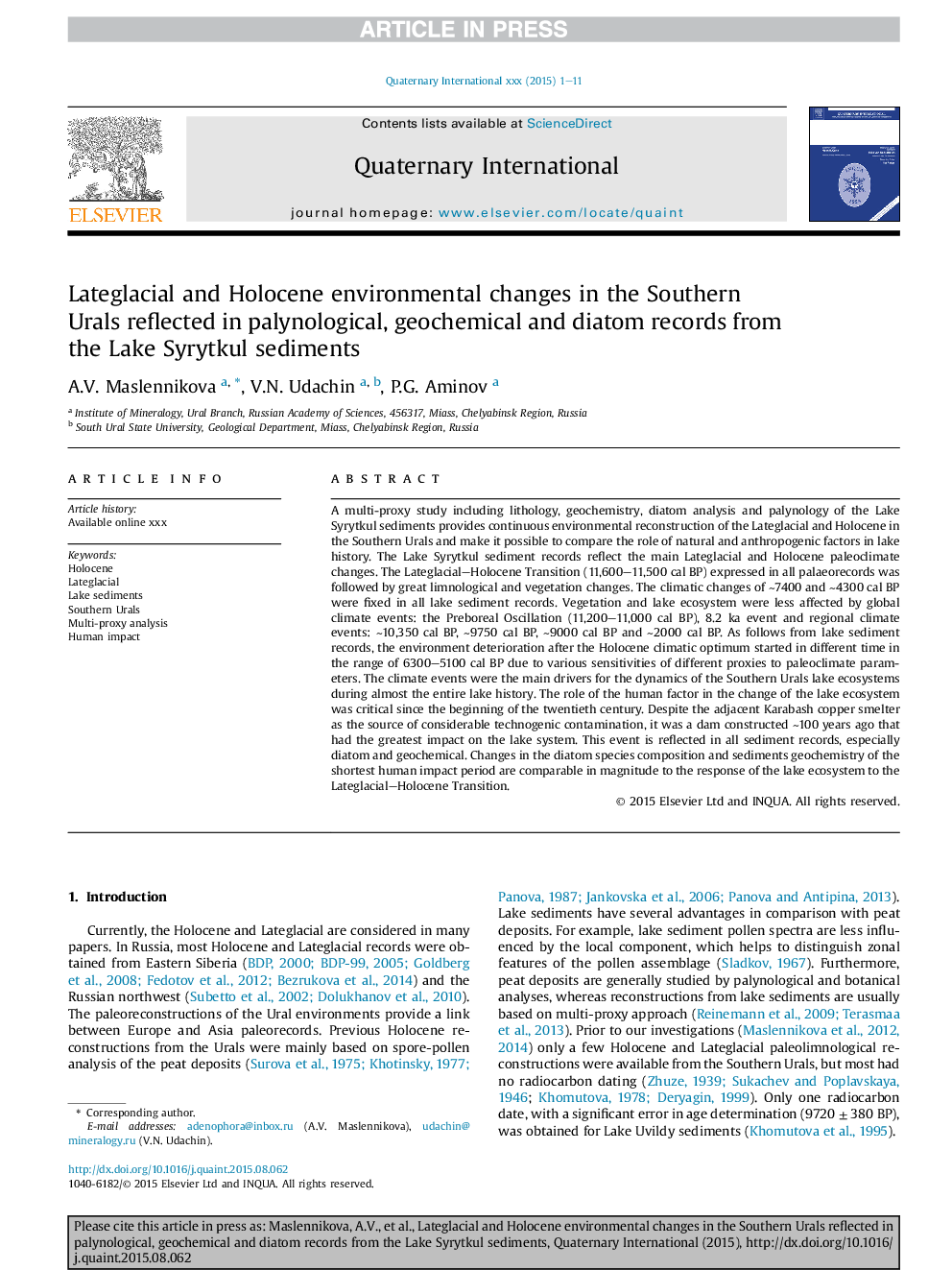| کد مقاله | کد نشریه | سال انتشار | مقاله انگلیسی | نسخه تمام متن |
|---|---|---|---|---|
| 5113952 | 1484087 | 2016 | 11 صفحه PDF | دانلود رایگان |
عنوان انگلیسی مقاله ISI
Lateglacial and Holocene environmental changes in the Southern Urals reflected in palynological, geochemical and diatom records from the Lake Syrytkul sediments
ترجمه فارسی عنوان
تغییرات زیست محیطی گلچین و هولوسن در اورال جنوبی منعکس شده در پرونده های پالینولوژی، ژئوشیمیایی و دیاتومه از رسوبات دریاچه سیرتکول
دانلود مقاله + سفارش ترجمه
دانلود مقاله ISI انگلیسی
رایگان برای ایرانیان
کلمات کلیدی
هولوسن، گل سرخ رسوبات دریاچه، جنوب اورال، تجزیه و تحلیل چند پروکسی، تاثیر انسانی،
موضوعات مرتبط
مهندسی و علوم پایه
علوم زمین و سیارات
زمین شناسی
چکیده انگلیسی
A multi-proxy study including lithology, geochemistry, diatom analysis and palynology of the Lake Syrytkul sediments provides continuous environmental reconstruction of the Lateglacial and Holocene in the Southern Urals and make it possible to compare the role of natural and anthropogenic factors in lake history. The Lake Syrytkul sediment records reflect the main Lateglacial and Holocene paleoclimate changes. The Lateglacial-Holocene Transition (11,600-11,500 cal BP) expressed in all palaeorecords was followed by great limnological and vegetation changes. The climatic changes of â¼7400 and â¼4300 cal BP were fixed in all lake sediment records. Vegetation and lake ecosystem were less affected by global climate events: the Preboreal Oscillation (11,200-11,000 cal BP), 8.2 ka event and regional climate events: â¼10,350 cal BP, â¼9750 cal BP, â¼9000 cal BP and â¼2000 cal BP. As follows from lake sediment records, the environment deterioration after the Holocene climatic optimum started in different time in the range of 6300-5100 cal BP due to various sensitivities of different proxies to paleoclimate parameters. The climate events were the main drivers for the dynamics of the Southern Urals lake ecosystems during almost the entire lake history. The role of the human factor in the change of the lake ecosystem was critical since the beginning of the twentieth century. Despite the adjacent Karabash copper smelter as the source of considerable technogenic contamination, it was a dam constructed â¼100 years ago that had the greatest impact on the lake system. This event is reflected in all sediment records, especially diatom and geochemical. Changes in the diatom species composition and sediments geochemistry of the shortest human impact period are comparable in magnitude to the response of the lake ecosystem to the Lateglacial-Holocene Transition.
ناشر
Database: Elsevier - ScienceDirect (ساینس دایرکت)
Journal: Quaternary International - Volume 420, 28 October 2016, Pages 65-75
Journal: Quaternary International - Volume 420, 28 October 2016, Pages 65-75
نویسندگان
A.V. Maslennikova, V.N. Udachin, P.G. Aminov,
